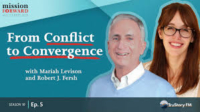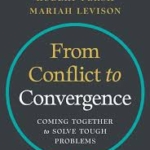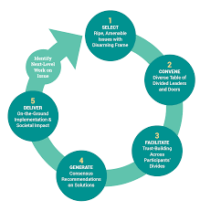
Peacebuilding Starts at Home is now finally at the publishers, wending its way toward a release in time for the Alliance for Peacebuilding’s PeaceCon in early September. That means that I have more time for writing blog posts and a new need for writing them, since they will be one part of several of our marketing campaign.
So, expect a couple of changes to the blog, especially if you read it on Substack rather than Linkedin or my own website. However you read it, the plan is to publish an issue a week, normally on Tuesday mornings. I won’t focus on the book all or even most of the time. I will raise the issues it focuses on and, when possible update them.
I am also planning to add a paid tier or two to the Substack version. We are still making plans, but one thing is definite. The basic and now almost always weekly posts will remain free. The basic paid tier will include an electronic copy of the book when it is published and other benefits. What Substack calls the Founder level will include the book and consulting time with me and/or other members of the AfP team helping you set up your own project.
In any event, as will be the case with book royalties, all of the income will go the AfP’s Peacebuilding Starts at Home initiative.
Last July, I wrote a post about the fact that politics is not or at least does not have to be a four letter word. In the ten months since then, I’ve more than occasionally had my doubts. Both sides in the election campaign. The rhetoric since President Trump’s second inauguration. Nothing has been very encouraging.
Until a couple of weeks ago when I attended Convergence’s Annual Summit here in Washinton. As you will see in a moment, I have a long history with Convergence’s founder but had let the relationship wither as my own interests shifted away from national level politics. But, because Convergence was going to be featured in Peacebuilding Starts at Home, I decided to go to the summit this year and make certain that I hadn’t written anything stupid in my draft.
I’m glad I did.
Because Convergence is one of the few examples we can point to here in where political dynamics can contribute to the health of the entire system, not to its decline
The 2000 Election
The story goes back to results of the 2000 election which were the most acrimonious ever (until 2020 that is) because victory in the electoral college came down to a few thousand contested votes in Florida. After the Supreme Court’s decision on the recount there gave George W. Bush the victory over Al Gore, a few political insiders decided to do what they could to find a way to avoid a repetition of the drama and uncertainty the country had just gone through.
Our team at Search was approached by two veterans of the partisan wars who had a novel idea along those lines. Former Democratic member of Congress Dan Glickman had gotten to know and like Montana’s former Republican governor Marc Racicot. Racicot, in particular, had seen the cost of the election firsthand as head of President Bush’s campaign. More importantly, he had created something called a consensus council while he was governor and knew of similar bodies in South Dakota and Delaware. The two of them asked us to help them create one at the federal level.
Basically, consensus councils use trained conflict resolution professionals to convene interest group leaders for a series of meetings that take place over a number of months. While the logic behind convening is quite similar to what Dick O’Neill and I came up with, a consensus council hopes to accomplish something other than coming up with cool ideas.
They are not looking for major intellectual breakthroughs on the big questions of the day, including those that weren’t on the radar screen yet. Rather, they work on the assumption that of facilitators can get policy advocates away from the television cameras and let them get to know each other, they can find ways of hammering out agreements on what had been controversial policy questions. Because all of the major groups were behind the proposal, it could avoid the gridlock in the legislature and easily get enacted into law.
So, my colleagues worked with Racicot, Glickman, and a team of prominent leaders from both sides of the proverbial aisle and drafted a bill that would create a United States Consensus Council. It came close to becoming law in 2002 when it was attached to a larger bill that was working its way though Congress. At that point, a Democratic senator put what is known as a hold on the bill which kept it from passing.
Convergence
At that point, Rob Fersh, who had headed the project at Search decided to create Convergence in 2009 as a separate organization to promote consensus-based policy making on the assumption that we were not likely to get a law creating the council any time soon. It also made a subtle but important distinction by using the word convergence rather than consensus. Fersh and his team understood that getting complete consensus would be all but impossible on those “big ticket” items as health care was in the first half of the 2000s. Instead, we could make progress by helping advocates converge around general goals from which they could develop concrete proposals that might only produce marginal policy changes that could lay the groundwork for more paradigm-shift-like steps later on.

Since then, Convergence has been a one of its kind organization bringing cutting edge conflict resolution skills to the policy making community in Washington and, at times, state capitals. As Fersh and his successor as president of Convergence Mariah Levison put it in their recent book, they believed that:
Something was missing from our capacities as a nation to take on issues of consequence: the ability to skillfully integrate the wisdom and experience of people with differing backgrounds and vantage points.
They knew from the beginning that not all issues were what conflict resolution experts call “ripe” for resolution. If, for instance, too many minds of too many leaders are too closed as may have been the case with wokism as I was finishing this book, their tool kit probably won’t be all that helpful.
But on controversial issue after controversial issue, Convergence has demonstrated that they can make a huge difference on issues like health care, immigration, prisoner reentry, and the budget.
They never ask participants to abandon or even water down their ideas. Instead, they recruit senior leaders from the interest groups (in other words lobbyists) who are open to talking with their colleagues on the “other side,” many of whom they only met previously during shouting matches on television talk shows or at congressional hearings. As would have been the case with the USCC, Convergence’s staff brings them together for a series of private meetings. Behind the scenes, the staff begins exploring language and policies that could unite the leaders on at least some of the issues they are currently arguing over. Even more importantly, they help the participants build personal relationships that establish trust and sometimes even friendships across ideological divides.

They start by finding common ground in defining the problem itself, which is often no mean feat. The facilitators start by helping the participants develop better interpersonal relationships whatever their differences on the specific issues that divide them. The facilitators also focus on getting the leaders to see the importance of adopting a mindset that emphasizes solving problems rather than scoring points and which then helps them identify building blocks around which they begin forging even partial solutions.
That often revolves around helping the participants in the working group identify one or more general goals that they all support. In the work Convergence has done on health care, that has included a commitment to expanding quality coverage for more and more Americans at an affordable price. Then, as they put it, they “map the terrain” to help participants see where their analyses overlap. At that point, they make certain that everyone has an opportunity to speak and be truly listened to so that they can see that conflict can be constructive and begin building more trust in each other. Everyone tries to treat everyone else with dignity and respect, at least giving each other the benefit of the doubt.
Meanwhile, the facilitators draw on what global peacebuilders have learned about conflict resolution both in the plenary sessions and in their work behind the scenes. Sometimes, they simply ask the participants to do an adult version of Daniel Tiger’s request and take a few breaths and count to four. Sometimes, they help the participants reframe the issue so that common ground can be found.
Only then, do areas of possible policy collaboration begin to emerge. More often than not, they have found that participants reach partial agreements. More importantly, they discover that they often actually like each other and look forward to deepening their relationships over time, thereby laying the groundwork for more collaboration down the line. In short, as they entitle one of their book’s sections, they help the participants put “people before proposals.”
 At the summit that I attended I learned some things I hadn’t known about Convergence’s work. It now does some work at the state and local levels. It also provides training in its methodologies for anyone who might be interested. It has branched out into new policy areas, including budgeting. So, I came away convinced that Convergence has a lot to offer as we develop Peacebuilding Starts at Home and begin making plans for a political renewal in this country that emphasizes what we are for rather than what we are against.
At the summit that I attended I learned some things I hadn’t known about Convergence’s work. It now does some work at the state and local levels. It also provides training in its methodologies for anyone who might be interested. It has branched out into new policy areas, including budgeting. So, I came away convinced that Convergence has a lot to offer as we develop Peacebuilding Starts at Home and begin making plans for a political renewal in this country that emphasizes what we are for rather than what we are against.
If Convergence had all the answers, there would not have been any need for me to write this book. Its tools have only yielded limited results even on big ticket issues like health care coverage or immigration. It does not even try to produce the kind of cultural change I discussed in chapter 6. Similarly, it does not ask its participants to do so either.
Nonetheless, it is one building block.
Next Time: Building a market that doesn’t exist.
The views and opinions expressed in this article are those of the author and do not necessarily reflect the official policy or position of the Alliance for Peacebuilding or its members.
